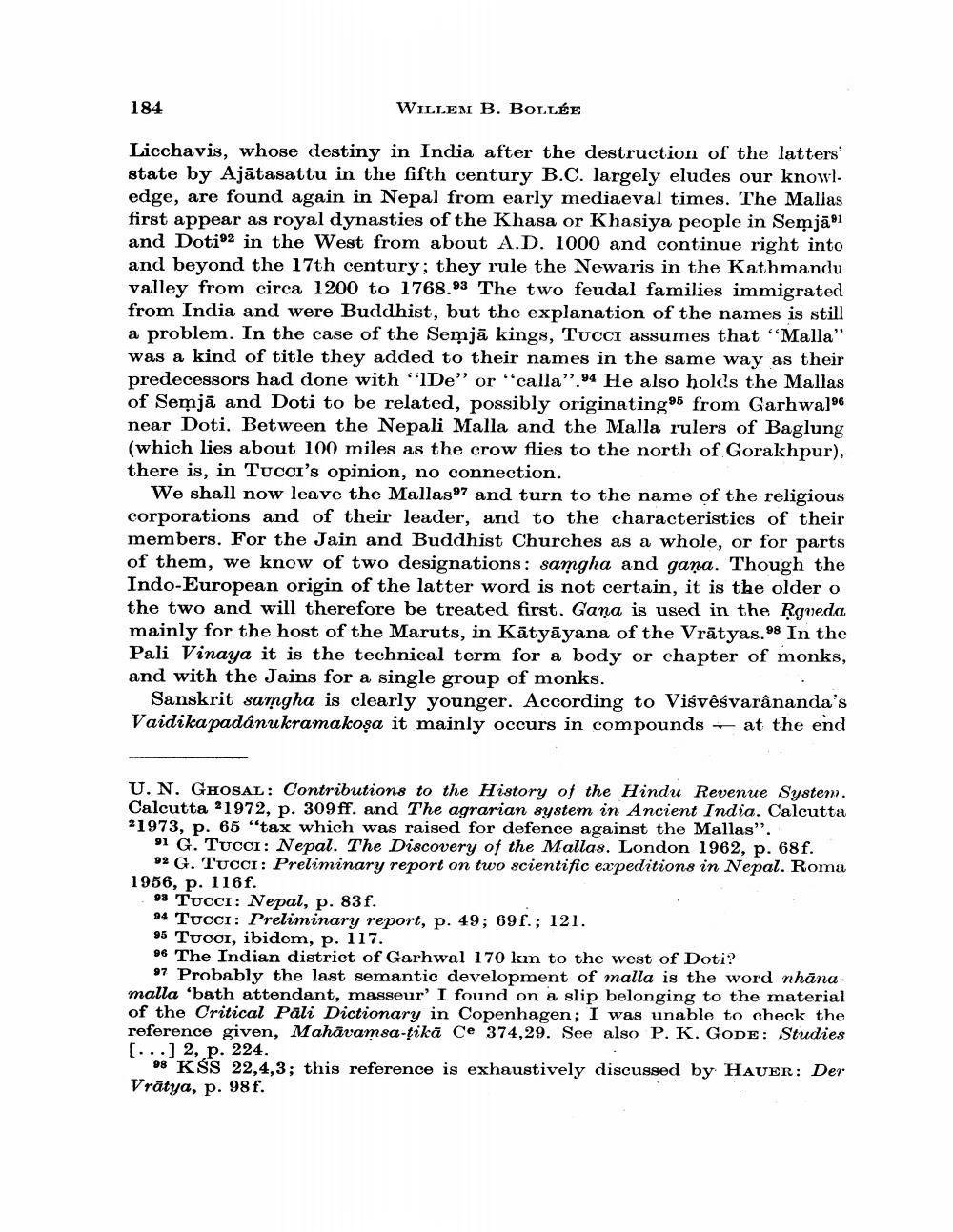________________
184
WILLEM B. BOLLÉE
Licchavis, whose destiny in India after the destruction of the latters' state by Ajātasattu in the fifth century B.C. largely eludes our knowl. edge, are found again in Nepal from early mediaeval times. The Mallas first appear as royal dynasties of the Khasa or Khasiya people in Semjā°1 and Dotio2 in the West from about A.D. 1000 and continue right into and beyond the 17th century; they rule the Newaris in the Kathmandu valley from circa 1200 to 1768.93 The two feudal families immigrated from India and were Buddhist, but the explanation of the names is still a problem. In the case of the Semjā kings, TUCCI assumes that "Malla" was a kind of title they added to their names in the same way as their predecessors had done with "IDe" or "calla”.94 He also holds the Mallas of Semjā and Doti to be related, possibly originating95 from Garhwalo6 near Doti. Between the Nepali Malla and the Malla rulers of Baglung (which lies about 100 miles as the crow flies to the north of Gorakhpur), there is, in TUCCI's opinion, no connection.
We shall now leave the Mallaso7 and turn to the name of the religious corporations and of their leader, and to the characteristics of their members. For the Jain and Buddhist Churches as a whole, or for parts of them, we know of two designations: samgha and gana. Though the Indo-European origin of the latter word is not certain, it is the older o the two and will therefore be treated first. Gana is used in the Rgveda mainly for the host of the Maruts, in Kātyāyana of the Vrātyas.98 In the Pali Vinaya it is the technical term for a body or chapter of monks, and with the Jains for a single group of monks.
Sanskrit samgha is clearly younger. According to Viévèśvarânanda's Vaidika padânukramakoşa it mainly occurs in compounds — at the end
U. N. GHOSAL: Contributions to the History of the Hindu Revenue System. Calcutta 21972, p. 309 ff. and The agrarian system in Ancient India. Calcutta 21973, p. 65"tax which was raised for defence against the Mallas".
91 G. TUCCI: Nepal. The Discovery of the Mallas. London 1962, p. 68f.
02 G. Tucci: Preliminary report on two scientific expeditions in Nepal. Roma 1956, p. 116f.
93 TUCCI: Nepal, p. 83f. 94 TUCCI: Preliminary report, p. 49; 69f.; 121. 95 TUCCI, ibidem, p. 117. 96 The Indian district of Garhwal 170 km to the west of Doti?
97 Probably the last semantic development of malla is the word nhānamalla 'bath attendant, masseur' I found on a slip belonging to the material of the Critical Pali Dictionary in Copenhagen; I was unable to check the reference given, Mahavamsa-ţikā Ce 374,29. See also P. K. GODE: Studies [...] 2, p. 224.
98 K S 22,4,3; this reference is exhaustively discussed by HAUER: Der Vrätya, p. 98f.




